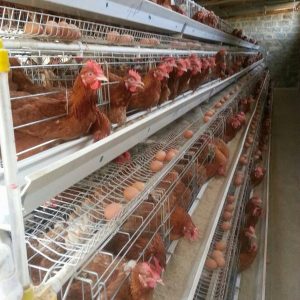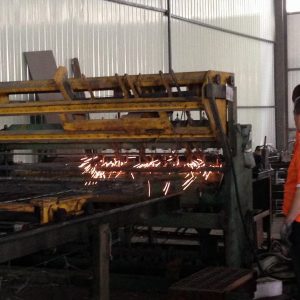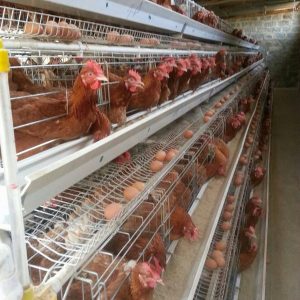
What are the breeding methods for guinea fowl?
What are the breeding methods for guinea fowl? The guinea fowl, also known as the African pheasant, is a wild fowl of the African continent, good at running and flying, timid, screaming, one frightened and yelling in a group. People who are not used to can’t stand the cry. But the guinea fowl tastes quite delicious, which is even more delicious than the farmed pheasant. So how is guinea fowl breeding?
Guinea fowl life habits
1 Strong adaptability Guinea fowl is domesticated from wild birds, has a strong adaptability to the external environment, and has strong cold resistance and heat resistance. Adult guinea fowls can normally grow normally at -20 ~ 40 ℃, suitable for China Breeding in the southern summer season.
2 Hi group living Guinea fowls usually move in groups of 30 to 50 pigeons. After being frightened, they also flee and hide in groups. They will never be separated. If they are isolated, they are often morbid.
3 Wildness still exists Due to the short domestication history, it still retains the characteristics of wild birds: good flying, strong wings, chicks can fly more than 1m at 1 month old, and fly 3m at 3 months old, good climbing at rest or at night Habitat high; good activities, especially chicks because of their strong ability to move, drill everywhere, often squeezed and injured. The guinea fowl is naturally sensitive and timid and easily alarmed. Once there is abnormal sound, abnormal color appearance or interference from other objects, it can cause panic among the whole group, and cries occur, and cries one after another. If the red drinking fountain is suddenly replaced with a yellow drinking fountain, the chickens will dare not approach the drinking fountain for a long time.
4 Hi sand bath, love tweet The guinea fowl raised on the ground often plan pits in the topsoil to create sand bath conditions for themselves. During the sand bath, spread the sand evenly between the feathers and the skin. In addition, the rhythmic and coherent tinnitus sound is a major feature of guinea fowl. If the night chirp sounds strongly and suddenly, it has an alarm function. Once the sound decreases or the sound intensity decreases, it can be used as a harbinger of disease.
Nutrition requirements
Although the growth rate of guinea fowl is not as fast as that of broiler chickens, the energy and protein requirements of the diet are higher than that of broiler chickens, especially the requirements for sulfur-containing amino acids are more prominent. Full price feed with high level and good quality. The recommended nutritional requirements for commercial guinea fowl are: 0 to 4 weeks old: ME: 12.96 MJ/kg, CP: 22% to 24%, Ca: 1.20%, available phosphorus: 0.5%; 4 to 8 weeks old: ME: 13.17 MJ/kg, CP: 20% to 22%, Ca: 1.00%, available phosphorus: 0.45%; after 8 weeks of age: ME: 13.38 MJ/kg, CP: 18% to 20%, Ca: 0.9%, available phosphorus : 0.45%; anticoccidial drugs should be added to the diet and antibiotics should be added regularly and preventively. If the conditions are limited, the breeder can also choose the corresponding fast large broiler feed.
Feeding management points
1 Temperature Temperature is a key factor in the success or failure of raising guinea fowl. The fresh-shelled guinea fowl weighs 26 to 35g, has a small body and a thin body, is colder than other broiler chicks, is extremely sensitive to external temperatures, and is susceptible to cold. Therefore, the brooding temperature is about 2°C higher than that of ordinary chickens, that is, the first week of age Should be controlled at 36 ~ 38 ℃, and then drop 2 ℃ every week until the transition to normal temperature. Whether the temperature is appropriate should be judged by observing the dynamic performance of the flock.
2 Humidity Guinea fowl prefers to avoid dryness and dampness. If the humidity is too high, the litter is prone to mold and breeding bacteria. The fermentation produces too much hydrogen sulfide and ammonia gas, and it is easy to cause heat loss in the house and induce intestinal diseases. If the humidity is too low, the ground is dry, dust and air are dirty, it is easy to induce respiratory disease. Generally, the relative humidity is slightly higher in the early stage of 65% to 70%, and slightly lower in the later stage is preferably 55% to 60%.
3 Ventilation The purpose of ventilation is to remove harmful gases in the house and replace with fresh air. In the brooding period, as long as the appropriate temperature is ensured, the amount of ventilation should be increased as much as possible, but it should be prevented from being attacked by winds and winds, and avoiding excessive temperature fluctuations in the pen due to ventilation.
4 Density The guinea fowl is sensitive by nature. It is suitable for each group to be no more than 500 pigeons. Larger numbers should be isolated and divided into groups. The feeding density per unit area should be adjusted in time with the growth and development of guinea fowl: 30-40 pigeons per square meter in the first week; 20-30 pigeons per square meter in the second week; 15-20 pigeons per square meter in the third week; and the fourth week 10-12 birds/m2; keep 8-10 birds/m2 after the fifth week.
5 Illumination Illumination includes illumination time and illumination intensity. Reasonable light can promote the absorption of calcium and phosphorus, improve metabolism, prevent the occurrence of cartilage disease, help the growth of chickens, and reduce the darkness and frightening of chickens. The guinea fowl lighting system can refer to the broiler lighting method, using natural lighting during the day and artificially supplementing with low light at night, and the lighting hours are maintained at 22 hours day and night. The light intensity is slightly higher in the early brooding period (3~5W/m2), and gradually weakens in the later period, and maintains 0.5~1W/m2 after the temperature is removed.
6 Drinking water and feeding The pearl chicks should be started drinking within 12 to 24 hours. 0.1% vitamin C, 5% multi-dimensional glucose or electrolytic multi-dimensional can be added to the drinking water to enhance the quality of the chicken population. At the same time, antibacterial drugs such as enrofloxacin, ciprofloxacin, norfloxacin, oxytetracycline, etc. are added to the drinking water to prevent E. coli and salmonellosis. Start to eat after 1~2h. Sprinkle the wet material on the pad or food tray at the beginning. It is required to feed less and add more to keep the feed fresh. 3~4d can gradually transition to free feeding in the barrel or trough. Because the guinea fowl is lively and active, it likes to use the foot to practice the feed when eating, and likes to use the beak to throw the feed out, so the waterer or the bucket (slot) should be adjusted in time with the growth of the chicken.
7 Stocking According to the growth and development of guinea fowls and climatic conditions, the passage should be gradually opened to allow the chickens to enter the sports ground, allowing them to freely move, sand bath and inhabit. Tests have shown that chickens that are often sand bathed have healthy skin, compact and shiny feathers, and are not easily infected with skin diseases and other epidemics. Shelf habitation can reduce the impact of moist ground on the health of chickens, and is beneficial to skeletal muscle development and avoid the occurrence of sternum bending.
8 Reducing stress Guinea fowls are extremely sensitive to abnormal sounds and abnormal colors around them, which can cause frightening groups, escape, screaming and even suffocation due to pressure. Therefore, in the daily management process should be operated in order, fixed personnel and procedures, to create a quiet feeding environment, so that chickens have enough time to eat and rest.
How Guinea Fowl Broods
During the brooding period of guinea fowls, chicks of the same age and strain should be raised in the same brooding room, and they should be “boiled” and opened for food within 24 hours of hatching. Brooding should be divided into ground free-range breeding, floor net feeding and cage raising according to specific conditions. In places with good conditions and sufficient power, layered electric brooding cages can be used for brooding. The brood density is preferably 30-40 per square meter. Chicks that have just come out of their shells should live under a warm umbrella of 35°C to 38°C, and then drop by 3°C every week until 20°C. The humidity of the brooding room should be maintained at 50% to 60%, and pay attention to ventilation. For the convenience of management, the chicks should cut off their wings immediately after they are out of the shell, and pay attention to strict disinfection.



